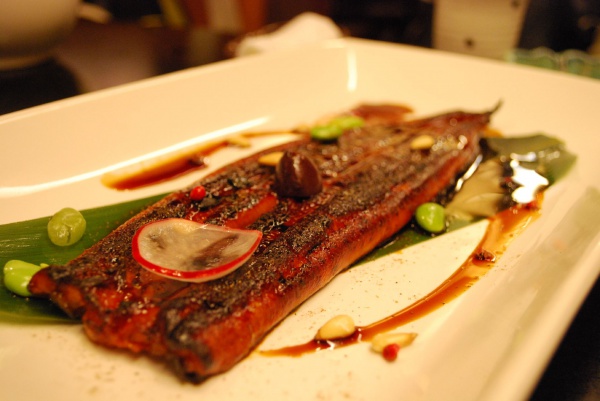Facts About Unagi
Unagi, meaning freshwater eel in Japanese, specifically refers to the Japanese eel, Anguilla japonica. This delicacy is a staple in Japanese cuisine, often prepared as kabayaki, where the eel is grilled with a sweet soy-based sauce. Do not confuse unagi with anago, which refers to saltwater eel in Japanese.
In Japan, unagi is a popular ingredient in dishes like unadon, a rice bowl topped with grilled eel. It is not only delicious but also nutritious, being rich in protein, vitamin A, and calcium. Specialized unagi restaurants abound in Japan, especially around Lake Hamana in Shizuoka prefecture, which is renowned for its high-quality unagi. Traditionally, unagi is a summertime favorite, particularly enjoyed on the midsummer day of the Ox.
In the realm of sushi, unakyu refers to eel and cucumber rolls. Since eel is toxic if not cooked properly, it is always served cooked. It is commonly enjoyed with tare sauce, a sweet and savory glaze, while roasted unagi simply seasoned with salt is known as "shirayaki."
However, there is a downside to this culinary delight. Unagi consumption raises significant sustainability concerns. According to Seafood Watch, consuming unagi is discouraged due to the immense pressure on global freshwater eel populations. Over recent decades, the populations of the three main eel species used for unagi have sharply declined, with the Japanese eel now listed as "endangered" on Japan's Red List.
Most freshwater eels consumed in the U.S. are farm-raised, but these eels are not bred in captivity. Instead, they are captured from the wild and then raised in farms, negatively affecting wild eel populations and their natural habitats. Furthermore, since eels are carnivorous, they are often fed other wild-caught fish, exacerbating the unsustainability of current eel farming practices.
